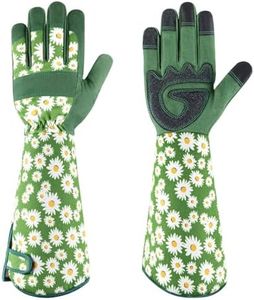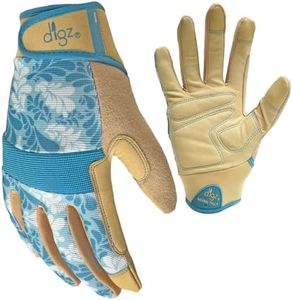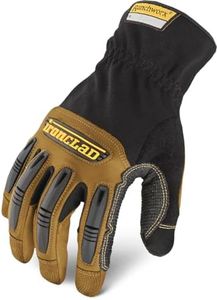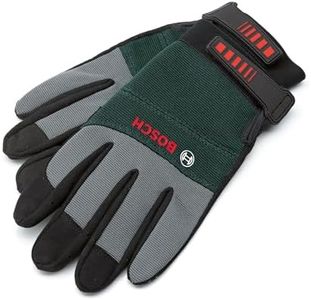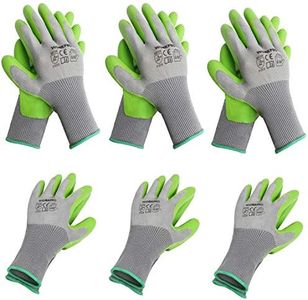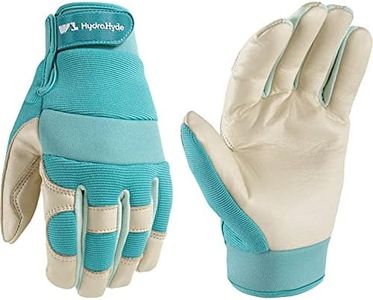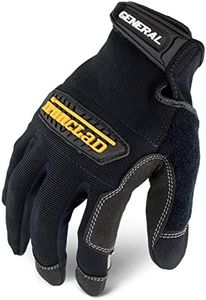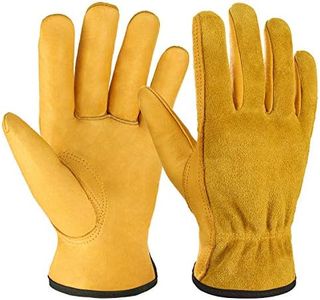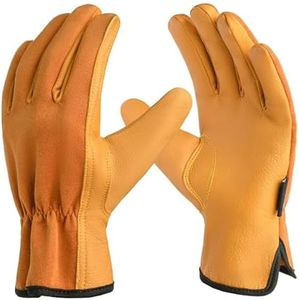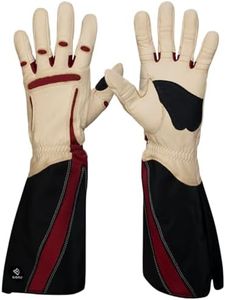We Use CookiesWe use cookies to enhance the security, performance,
functionality and for analytical and promotional activities. By continuing to browse this site you
are agreeing to our privacy policy
10 Best Garden Gloves
From leading brands and best sellers available on the web.Buying Guide for the Best Garden Gloves
When choosing garden gloves, it's important to consider how you'll be using them and what kinds of gardening tasks you do most often. The right pair of gloves will protect your hands from dirt, thorns, and moisture while also being comfortable and allowing you to move your fingers freely. Think about the level of protection and dexterity you need, how easy they are to clean, and whether you'll be working in wet, dry, rough, or delicate conditions. With a wide variety of gloves available, understanding the key features will help you find the pair that best matches your gardening habits.MaterialGarden gloves are made from materials like cotton, leather, rubber, or synthetic blends. This spec refers to what the glove is constructed from, and it’s important because it impacts durability, comfort, and protection. Cotton gloves are light and breathable, good for light gardening or handling soil and plants, but not great in wet conditions or for thorny tasks. Leather gloves are more durable and protect well from thorns and rough branches, making them great for heavy-duty tasks like pruning roses. Rubber or nitrile-coated gloves offer excellent water resistance and grip, perfect for wet work or handling slippery tasks. Synthetic blends can combine comfort, durability, and flexibility. To pick the right material, think about what work you do most—if you handle a lot of prickly plants, go for leather; if you mostly do planting and weeding, light cotton or synthetic might suit you better.
Fit and SizeFit and size refer to how well the gloves conform to your hands and whether they are available in sizes that match yours. This is crucial because poorly fitting gloves can make tasks harder and uncomfortable, and may even cause blisters. Gloves usually come in sizes such as small, medium, and large, though some are one-size-fits-most. Snug-fitting gloves allow better dexterity and control for delicate tasks, while a looser glove might be fine for heavy digging. To choose the right size, try on gloves if possible, or measure your hand according to any sizing guide. Consider a snug fit if you do a lot of detailed work, and make sure your fingers can move freely.
Protection LevelProtection level refers to how much shielding the gloves provide against thorns, chemicals, moisture, and abrasion. Some gloves offer reinforced fingertips and palms or long cuffs to guard your wrists and lower arms. This spec is especially important if you handle roses, cacti, or other spiky plants, or if you work with fertilizers or other chemicals. Lighter gloves are good for low-risk gardening like potting, while reinforced or gauntlet-style gloves are best for pruning and clearing. Choose based on the level of risk in your usual gardening—if you need to frequently handle thorny or rough plants, look for maximum protection.
GripGrip concerns how well you can hold onto tools, plants, or materials while wearing the gloves. Some gloves have textured or rubberized palms and fingers that help prevent slipping, which is useful in wet or muddy conditions. Others are smooth, making them less ideal for gripping tools securely but sometimes better for feeling delicate plants. If you often work with gardening tools or dig in wet soil, gloves with added grip are a smart choice. If you mainly handle delicate seedlings or plants, a lighter glove with minimal grip might be more comfortable.
BreathabilityBreathability is about how well the gloves allow air to pass through, helping keep your hands cool and dry during use. Highly breathable gloves are often made from cotton or have mesh sections, which are great for warm weather and long use because they reduce sweating. Less breathable gloves, like those fully coated with rubber, can make your hands sweaty but resist water well. Choose a pair with more breathability for summer gardening or if your hands tend to get hot, or pick more water-resistant gloves for damp or rainy conditions.
Ease of CleaningEase of cleaning refers to how simple it is to wash and care for the gloves after use. Some materials, like cotton or synthetic, can be tossed in the washing machine, while leather gloves usually need to be wiped clean and air-dried. Gloves that pick up a lot of dirt or sap may require frequent washing, so consider how much maintenance you're willing to do. If you want low-fuss care, look for machine-washable gloves, especially if you frequently get them dirty.
